Last week the iPhone celebrated its 15th anniversary...
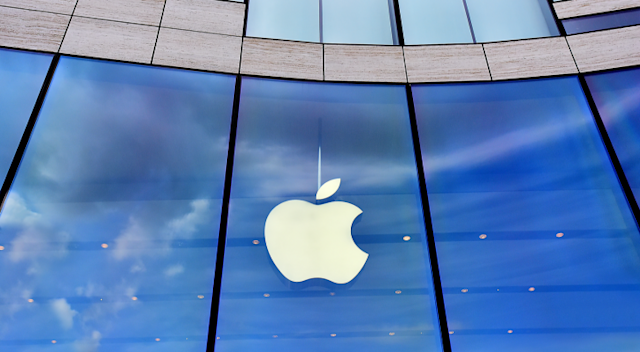
What has turned into a decade and a half of commercial glory for Apple started off slower than expected during the initial launch in 2007. The first iPhone was described as technically anaemic compared to other phones of its time, particularly with the lack of a physical keypad for typing. The first device was also incredibly expensive to develop – $150 million to be exact. However, 130 models, 2.2 billion phones sold and trillions of dollars in revenue later, such teething issues seem like a fond and distant memory. Simply put, the iPhone has single-handedly revolutionized the global technology landscape.
DeviceAtlas, which was established in 2005, has of course stayed along for the ride, keeping tabs on every iPhone model released since 2007. This has led to some interesting data trends over the years which we've shared below. The first chart documents the hardware classification of the iPhone over the last 15 years, as well as the hardware score – unsurprisingly, there has been continuous growth from the entry level iPhone in 2007 to the premium 13 Pro Max in 2021.
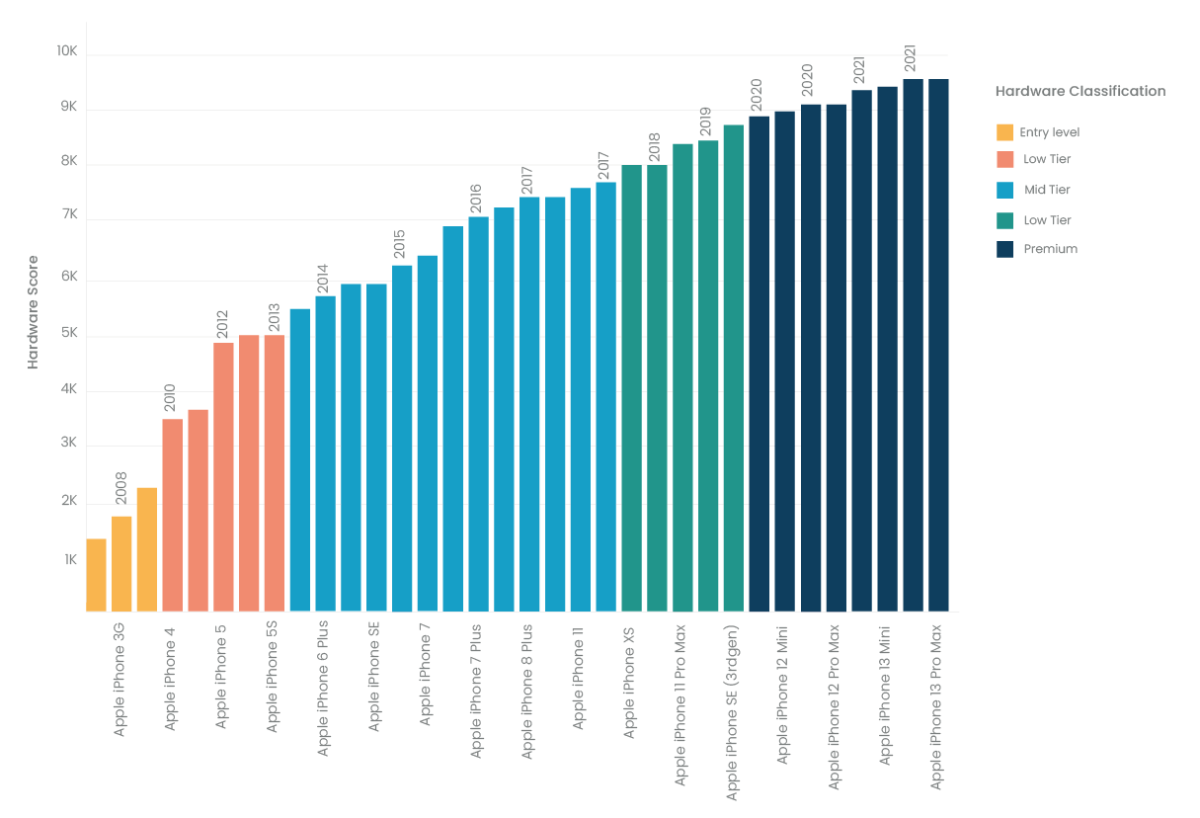
The iPhone screen
The diagonal screen size of the first iPhone released in 2007 was 3.5 inches. 14 years later in 2021, the iPhone 13 Pro Max screen was 6.7 inches and Apple’s largest to date. Below is a side-by-side comparison of the two models:
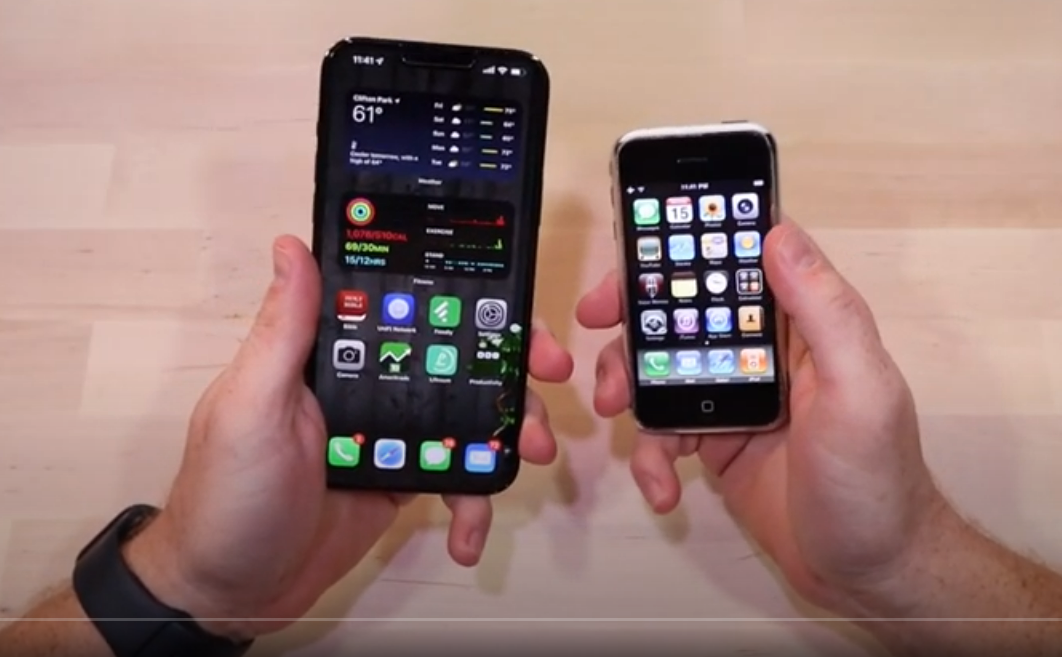
We have also broken down the average screen width and height by year released. Unsurprisingly, the iPhone screen has become bigger over time. This was hugely influenced by changing consumption trends and smartphones becoming streaming and gaming devices as well as a platform for communicating, browsing the Internet, and listening to music.
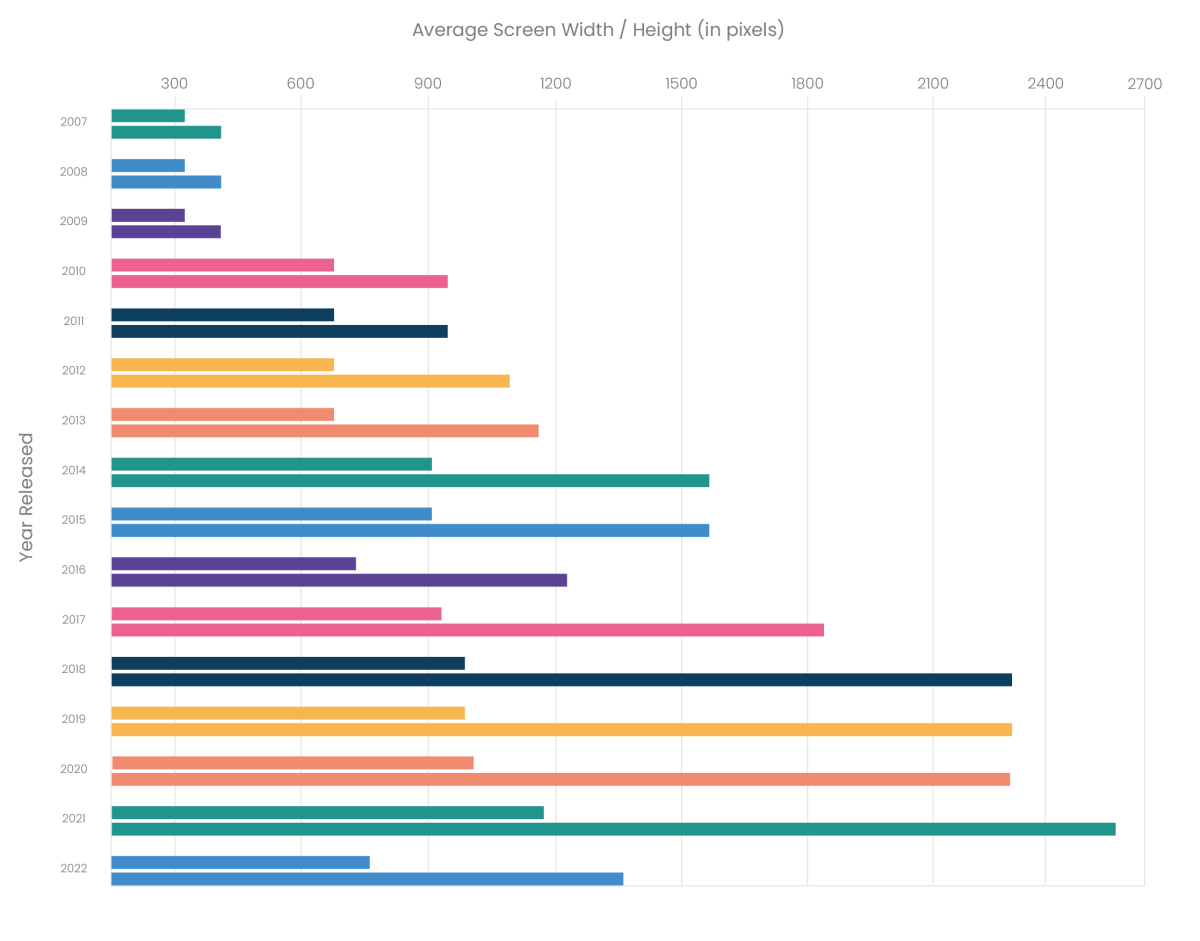
Display PPI has also (unsurprisingly) improved hugely since 2007. The first iPhone was 165 PPI vs the 2021 iPhone 13 Pro Max with 462 PPI (the iPhone 13 Pro Max is not the most recent model, but it is the most recently released premium tier model). This has led to a vast improvement in device graphics and image quality over the years, and ultimately a better user experience.
Year Released
Also interesting is the data around the number of models released by year – over time, different devices were developed for specific geographic markets, as well as newer or smaller versions of particular models. For example, in 2021, 20 variations of the iPhone 13 were released between the standard, mini, pro and pro max versions, and also for various international markets. So while many of these models were identical physically, their characteristics were not.
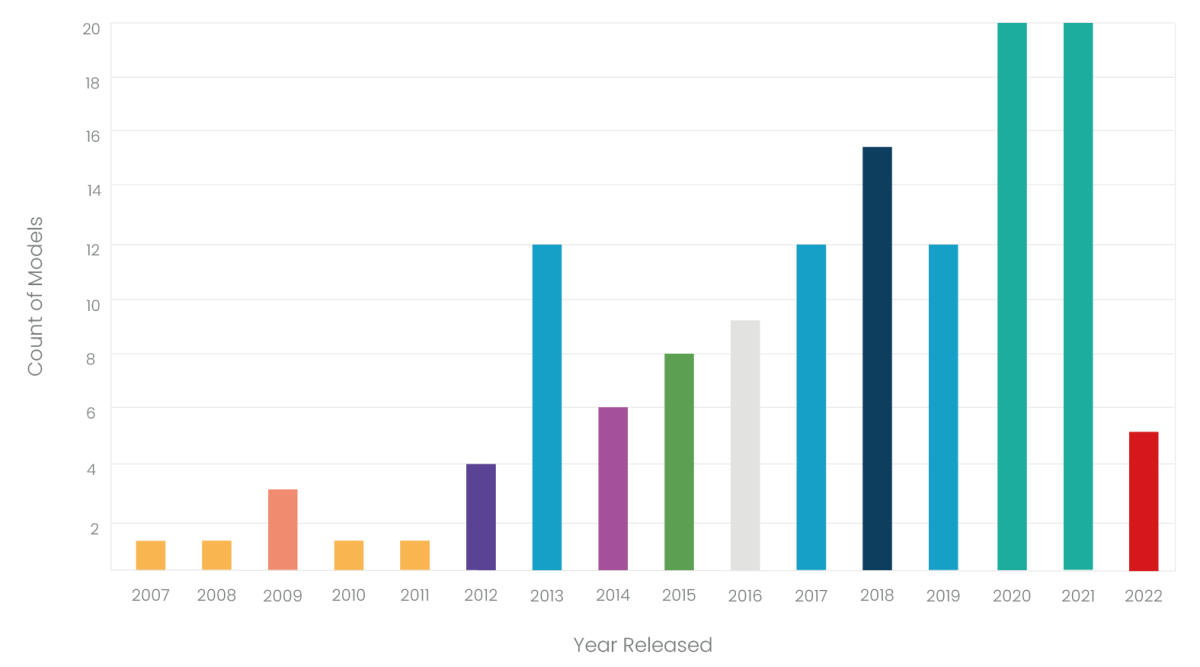
Technical Specifications
The CPU and storage capabilities of the Apple iPhone have also improved over the years – the very first iPhone had 128MB of RAM. For context, live TV streaming today in standard definition uses up to 300MB of data per hour. The maximum internal storage capacity of the first-generation iPhone was 16GB, which seems inconceivable today, and especially considering that the Pro 13 Max has a storage capacity of up to 1TB.
CPU cores and maximum clock speed have also changed vastly. The SE (3rd generation), released earlier this year as a ‘budget’ phone, has a max. clock speed of 3200 MHz. This is a stark contrast to the 2007 iPhone which had a maximum speed of 412 MHz. Each iPhone that was released since 2017 also has a six-core CPU design (iPhone 8 onwards), compared to just a single core CPU with the 2007 iPhone. Lightyears in the difference!
Network Protocols
Some major differences have also occurred over the years in terms of iPhone network capabilities. VoLTE and VoWiFi, valuable data points which many MVNOs use today in upgrade planning, was not available until the iPhone 6 was released in 2014. Similarly, as 5G connectivity becomes the norm in Western society and is available on each iPhone model since the SE (2nd generation) - a mid-tier device - the highest cellular generation of the very first iPhone was just 2G.
How DeviceAtlas reduces the complexity of iPhone detection
Apple has always concealed the iPhone (or iPad) version from the web server that it is visiting. This happens by limiting the detail contained in the user-agent string and HTTP headers, which makes it very difficult for any business interested in device capabilities to understand its iPhone traffic…this is especially problematic considering Apple’s smartphone market share and the high percentage of website visits coming from mobile devices.
DeviceAtlas enables web servers to identify precisely which iPhone model they are dealing with (achieved through the pioneering approach of using a JavaScript library to provide supplementary information). This generates fine-grained analytics for clients as well as the ability to tailor content for best results based on the capabilities of a specific model. Just recently we analysed some of our iPhone traffic to understand how many unique models are still currently active. Surprisingly, we noticed some instances of iPhone 5 users - the graphic below shows the differences in device capabilities between the iPhone 5 and iPhone 13 Pro Max (currently the highest spec iPhone released).
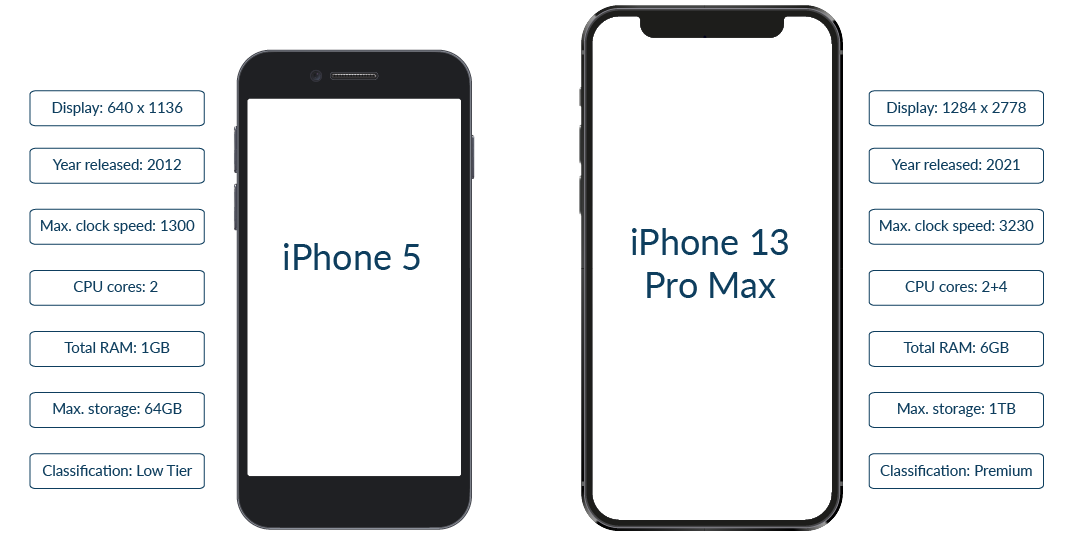
The difference is vast and clearly demonstrates how the user experience can vary significantly based on the device used. Here’s a further breakdown of the different models we identified during the same time period (based on a single week):
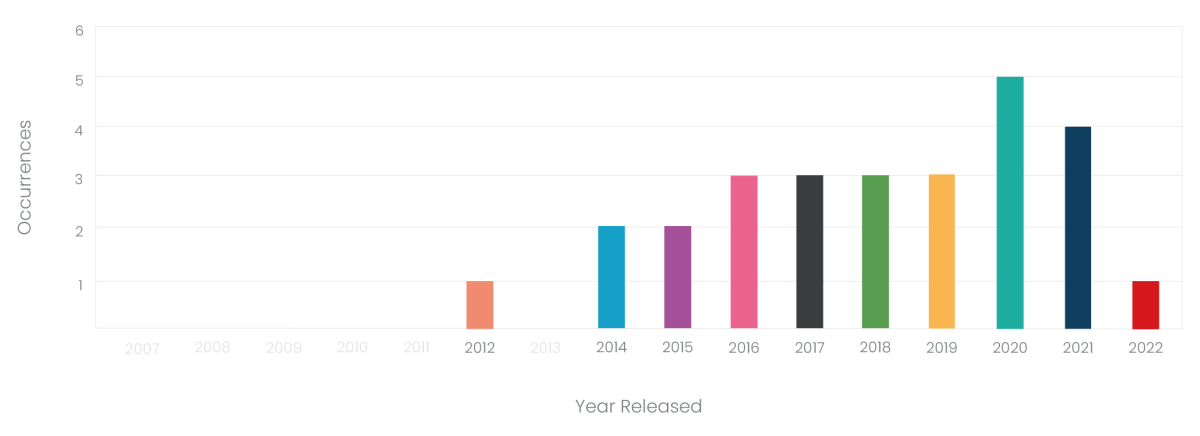
This highlights the need for businesses to acknowledge that there are still many older iPhone models ‘out in the wild’, while also raising the question of how to identify these models if Apple is concealing the versions from web servers. Thankfully, DeviceAtlas provides the missing piece of the puzzle here.




